Computational Fluid Dynamics
Our research efforts in Computational Fluid Dynamics (CFD) include high performance computing for compressible and incompressible flows, development of finite volume schemes for hybrid and generalized meshes, biomedical flow modeling, unsteady flow simulations, rigid body dynamics simulations with six degrees of freedom (6 DOF), investigation of turbulence models for generalized meshes, application of generalized overset mesh technology, and simulation of pollutant transport through urban areas. Traditionally, computational fluid dynamics techniques are developed for aerodynamics applications. Our research focuses on the application of CFD techniques to traditional, non-traditional, and multi-disciplinary applications.
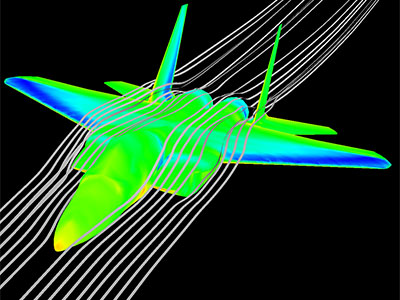
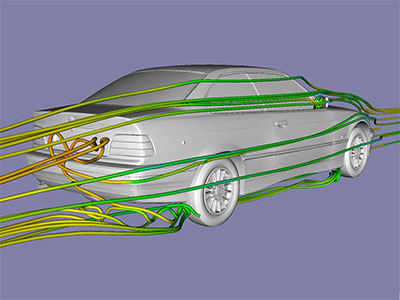
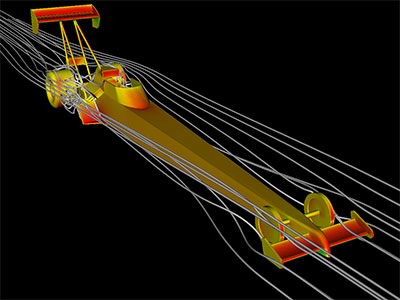
Researchers in the CFD area work in collaboration with the renowned medical school at UAB to apply CFD techniques for biomedical flow simulations. The complex physiological geometry of the femoral artery bifurcation and the upper airways of sleep apnea patients were created from a sequence of CT - scan images. Blood flow waveforms, derived from Phase Contrast MR Images, were used to generate Womersley velocity profiles that were used as boundary conditions. Equations governing blood flow were solved using a second order time accurate in-house finite volume CFD solver.
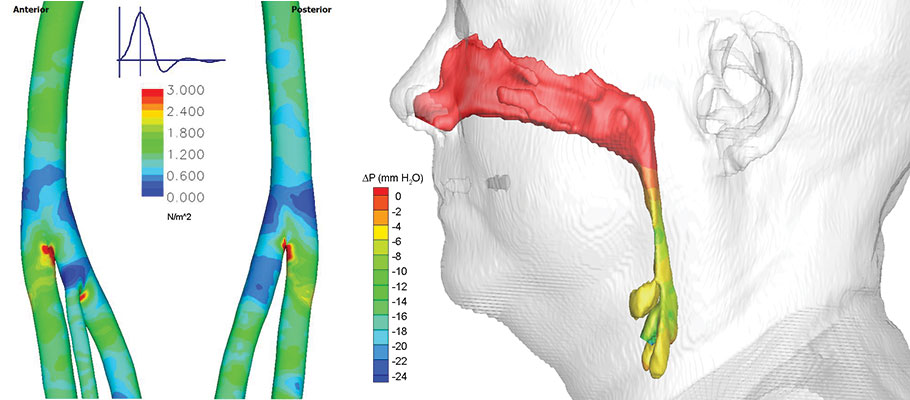 The application of CFD techniques to analyze blood flow through femoral arteries and airflow though upper airways of a sleep apnea patient before and after surgery.
The application of CFD techniques to analyze blood flow through femoral arteries and airflow though upper airways of a sleep apnea patient before and after surgery.
A real-time prediction of the path of the pollutant transport through an urban area, in the case of an emergency, is an invaluable tool for emergency management and planning. However, the real-time simulation of chemical, biological, and radioactive (CBR) agent transport in an urban environment is a formidable task. This requires the modeling of complex city structures, which governs the wind field and in turn governs the path of the pollutant. Information about city structures is available in terms of GIS data which is collected either by a satellite or by an aircraft. Extracting the geometry of the city from this large data set for simulation is a daunting task. Modeling the wind field in the city and consequently the modeling of the transport of the pollutant involve the selection of appropriate governing equations and numerical schemes, and high-performance computing. Also, the visualization of the large number of data sets and feature detection plays a vital role in extracting information that is created by the numerical simulation and conveying this information to officials for decision making.
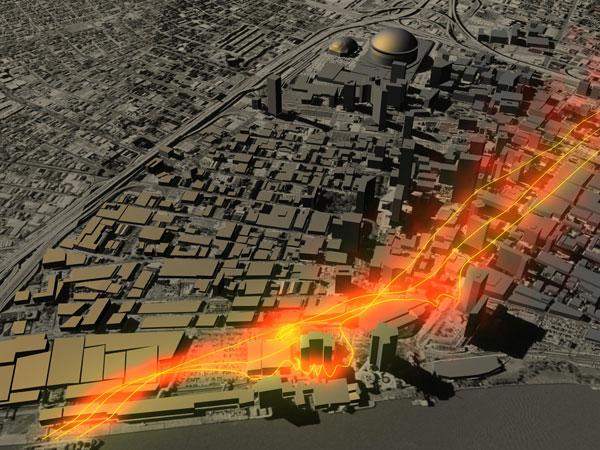
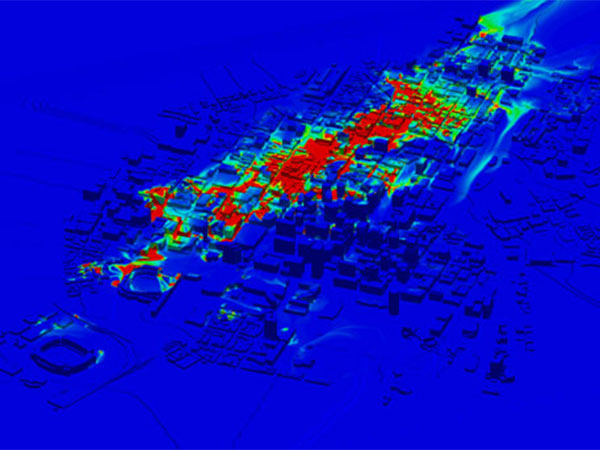
Many of the Computational Field Simulation (CFS) problems of interest such as store separation, control surface deflections, stage separation, etc. involve objects in the computational domain that move relative to one another. This class of problems presents a challenge for a CFD solver in terms of resolving complex flow features, handling a large relative motion of bodies, and accurately moving the grids associated with moving bodies. Overset meshes are suitable for this class of applications with focus of the research being overset technology for generalized meshes.
Contact
For more information, please reach out to Roy Koomullil at